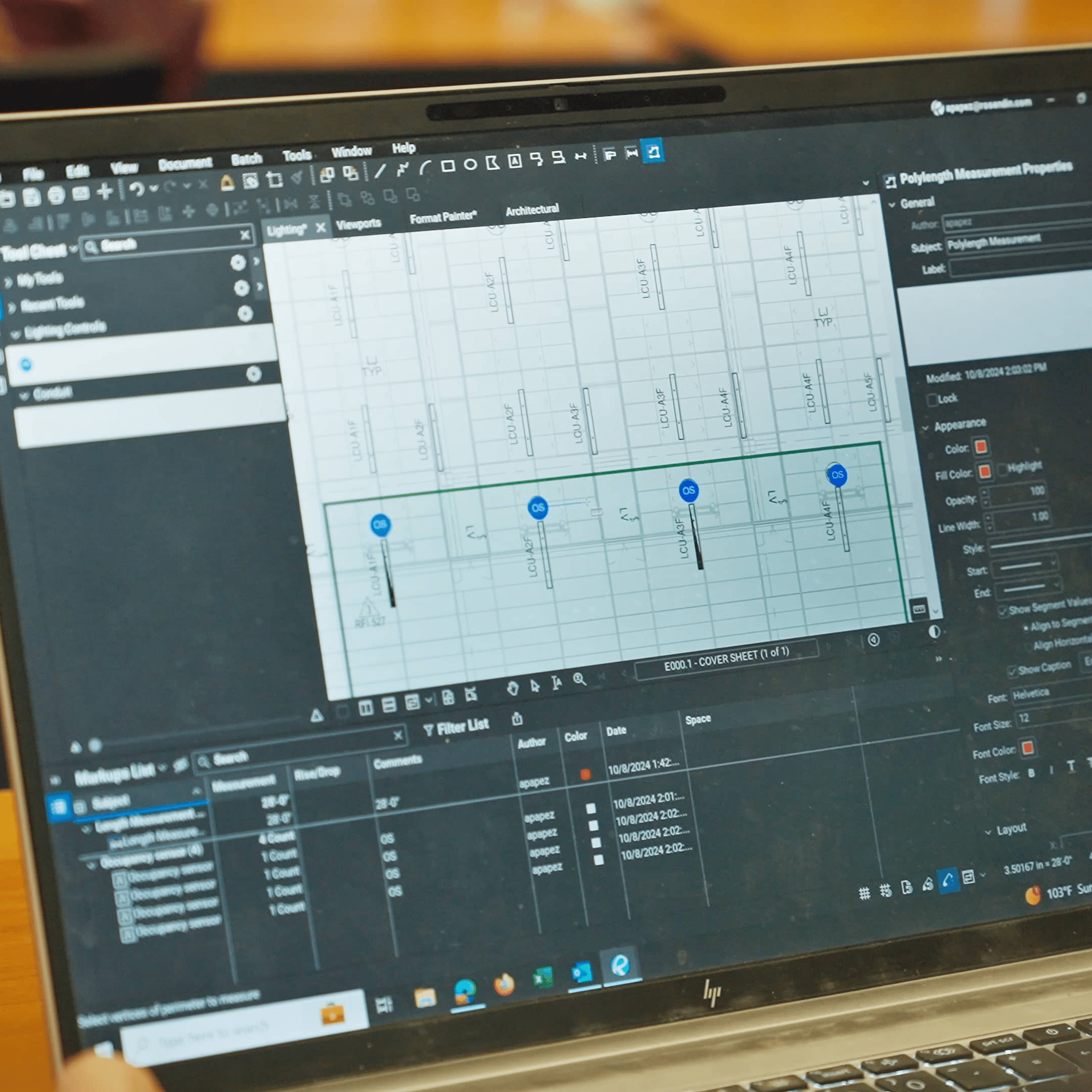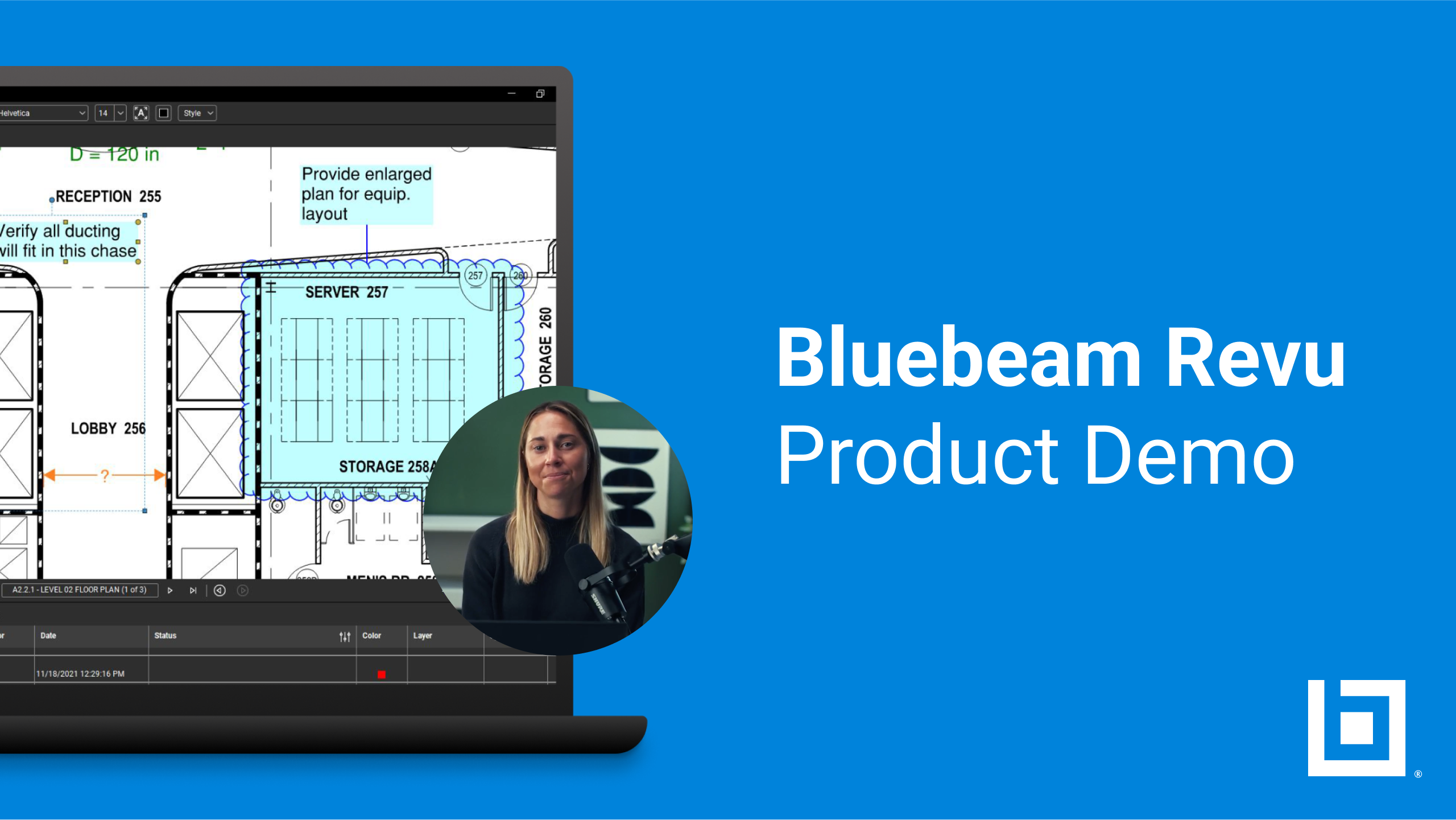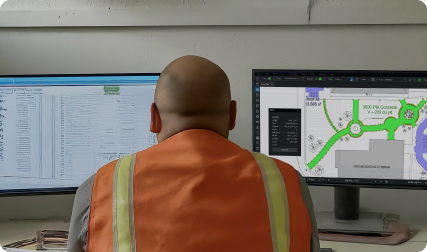
SchwörerHaus, a pioneer of prefabricated house construction in Germany, has been using Bluebeam Revu since 2019 to streamline planning and the construction process. Markus Schwörer, Head of IT at SchwörerHaus, explains how the software is used in conjunction with the company’s own CAD system and ERP software. He also discusses the challenges that had to be overcome, and how SchwörerHaus stays on course even in turbulent times through diversification and entrepreneurial foresight.
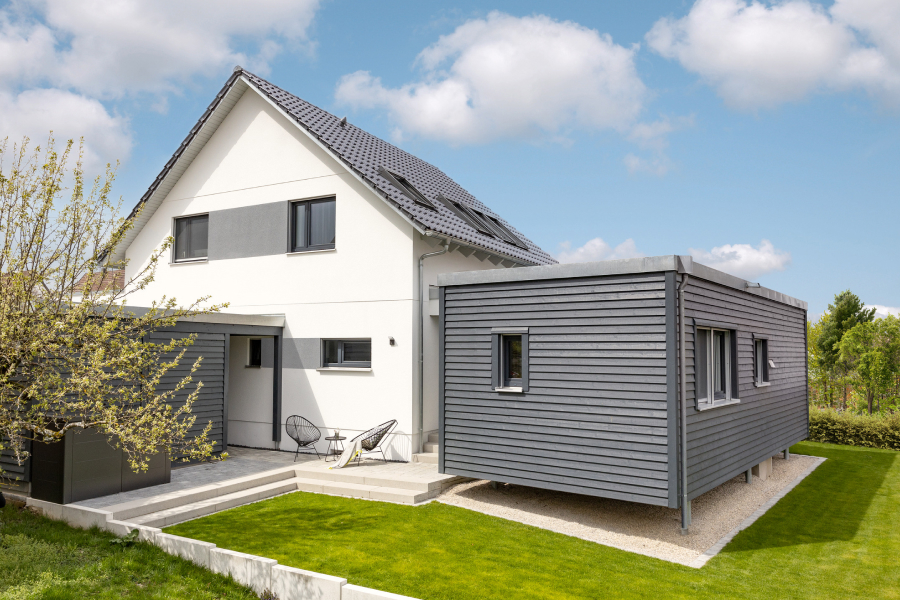
End-to-end digital solutions – from architect’s design to machine data
At SchwörerHaus, the digital workflow begins with the design plans from the company’s architect partners, usually delivered as PDF or DXF/DWG files. Bluebeam Revu construction software is used primarily to precisely evaluate information from PDF files, documenting specialist planning (structural engineering, building technology and construction planning) and the crucial design reviews required at various levels. Employees from the internal planning and production planning departments then add their annotations and comments to the PDF drawings. In Revu, the layers can be toggled on or off to display all plan information in full or only the information relevant to specific departments.
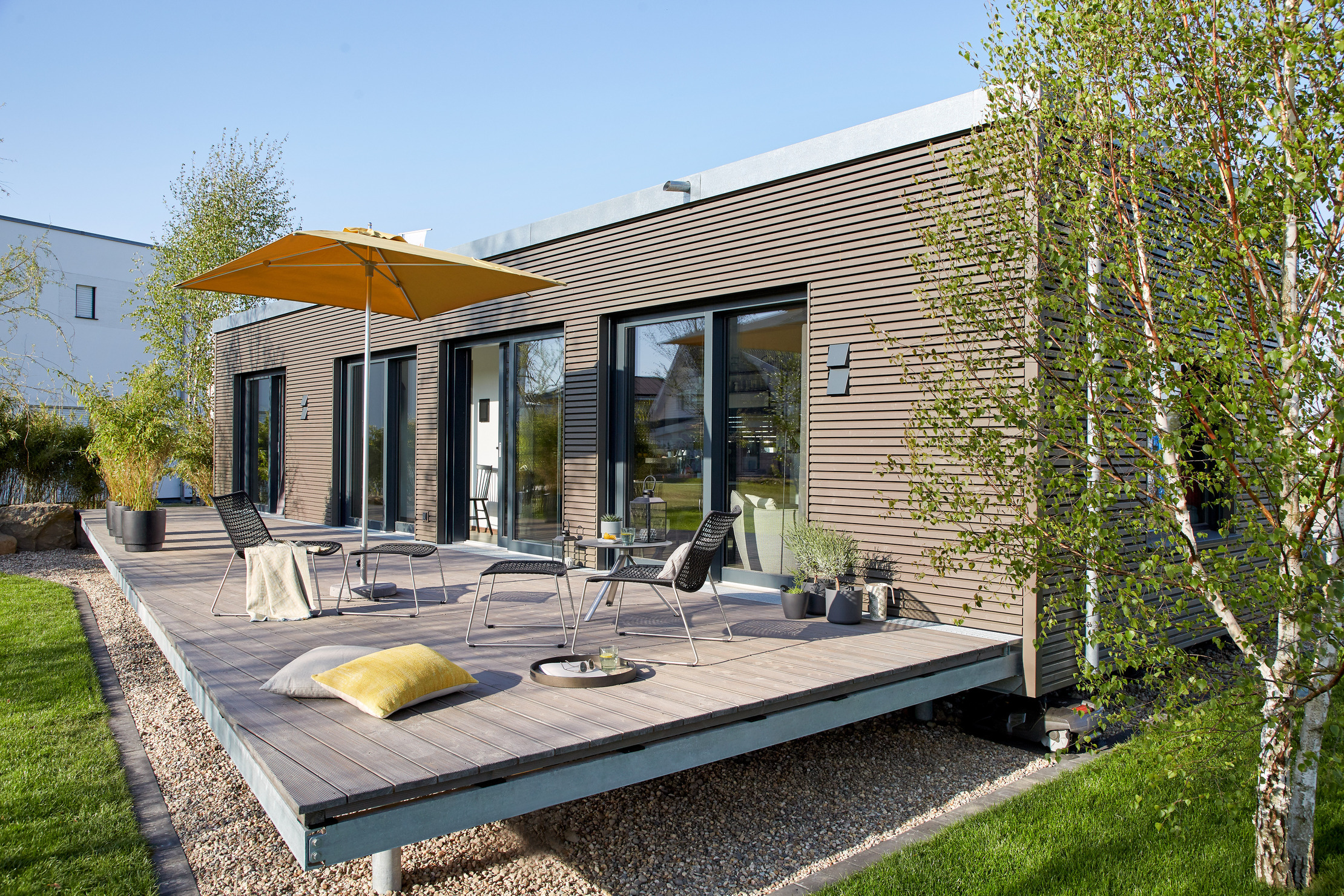
At the same time, the DXF/DWG files flow into the CAD system at SchwörerHaus:
“In our CAD software, all components are planned with millimeter precision,” explains Markus Schwörer. As an IT expert at SchwörerHaus, he’s responsible for a smooth digital process chain in planning and production. “The roof, ceilings, exterior and interior walls are all designed in detail in 3D,” he continues. Due to the high degree of specialization in the planning software, SchwörerHaus has precisely tailored its in-house CAD system to its needs, components, and systems. Even the machine data for the production systems is generated here. Bluebeam Revu and the CAD system run in parallel: “My colleagues in the Design department open Revu on a monitor to see what notes have been made, by the Structural Engineering office or the Fittings department for example, or where Electrical Planning has drawn the conduits.” Schwörer adds: “The relevant information from the Revu markups can then be transferred directly to the CAD design on the second monitor.” A unique feature of this pragmatic and efficient way of working is that it’s not a bidirectional data exchange between two software solutions via a common interface, but a parallel flow of information. This ensures that all important planning information from the different layers in Revu is incorporated into production plans.
“I see huge potential for using Bluebeam in conjunction with AI! A smart, integrated design review function in a future version of Revu would add a lot of value for us.”
Markus Schwörer
IT expert
SchwörerHaus KG
Prefabrication: the key to success
SchwörerHaus’ core area of expertise is residential buildings with an extremely high degree of prefabrication. “We try to deliver the elements to the construction site as modules in as finished a state possible, so that they can be assembled quickly on site,” says Markus Schwörer. This is based on their digital workflow, in which Bluebeam Revu plays a significant role. For example, the house has already been virtually assembled from 3D elements in the CAD system. Basic planning steps, such as the definition of various wall structures (e.g., to comply with the required KfW standards), are carried out using special SchwörerHaus macros. The CAD system is optimized to generate precise production data. However, the designers don’t model components such as windows, stairs, or chimneys in elements such as walls, roofs, and ceilings. Instead, the necessary recesses in the design are compared with the CAD design via ASCII data from the ERP system (where fittings are planned).
The practical benefits of minimizing potential for errors
Having used Bluebeam Revu non-stop for more than five years, SchwörerHaus is truly satisfied with the software in its defined area of application. The adaptability of the graphical interface is a major strength, because in-house structural analysis requires different tools than equipment planning or production preparation. “We use different views and Revu features in different departments. We’ve adapted our menus so that they’re easy for employees to use,” says Schwörer.
Bluebeam Revu is used in a variety of ways at SchwörerHaus. And even better, the company hardly ever has any need for support or major assistance in resolving problems. “Bluebeam Revu has been running without any issues since the initial installation,” says Markus Schwörer. “I can’t remember the last time I had a specific query for the support team!” Nevertheless, the use of digital plan data on construction sites presented a particular challenge. Site managers and fitters use the final PDF drawings from Bluebeam, structured in different layers, on their tablets to check the assembled elements. Having this control helps eliminate potential sources of error for subsequent series production, in the case of a pilot run for a new type of house. Yet tradespeople repeatedly faced the issue that only one layer could be displayed at a time when using the Android apps. The resulting workaround of having each layer displayed in a separate viewport is set to become obsolete in the future through native use of Bluebeam on construction site tablets.

An eye on the future: Diversification as a strategy
The construction and engineering industry is facing major challenges leading to much uncertainty among contractors and investors: rising construction costs and interest rates, shrinking funding pots and complex requirements for new construction and renovation that make planning difficult. In addition, policymakers are calling for less land consumption in urban and rural areas, which runs counter to the many people’s dream of having their own property. SchwörerHaus recognized this years ago and invested early on in a well-thought-out diversification strategy. The group is defying a negative industry trend with three other pillars: the FlyingSpaces modular residential units, multi-story residential construction through Schwörer Hybridbau and the production of complete bathroom pods with Schwörer Fertigbad-Systeme. This broad positioning helps the family-owned company withstand fluctuations in the single-family home market and leverage its valuable expertise in a range of areas.

Harnessing technological potential
After years of high demand and long delivery times, orders have returned to normal. “The current lead time is 10 to 12 months,” says Markus Schwörer. To ensure that it’s prepared for the future, SchwörerHaus is focusing on developing innovative living concepts and offering customers appealing, high-quality and affordable buildings. At the same time, it’s working intensively on technical solutions to compensate for increased costs and keep house construction attractive.
SchwörerHaus has always invested in its own infrastructure. Now they’re setting an example in resource conservation and sustainability. Examples include the new battery storage system for two biomass power plants and the establishment of its own sawmill to cut long transport routes. It is also actively pursuing new technologies: “We’re looking closely at what AI has to offer,” says Schwörer. He’s identified potential applications primarily in customer service (chatbots), drafting and processing extensive documentation (e.g., summaries using LLMs) or in the design review process using Bluebeam, once the right AI modules become available for the software.
Diversification at SchwörerHaus and the use of Bluebeam Revu
1. Single-family house construction
The houses are characterized by certified German-made construction and the use of durable and healthy materials. The digital workflow at SchwörerHaus begins with the delivery of the architect’s design plans, including PDF files. The team uses Bluebeam Revu to evaluate the data by analyzing the PDFs for technical planning details (structural engineering, building services and construction planning) and to carry out the design review process. The internal departments add annotations and comments to PDF drawings. These are equally important for onward planning, production and assembly.
2. FlyingSpaces
Modular residential units (tiny houses) that can be used flexibly as holiday homes, extensions, nursing homes or to add stories to existing buildings in metropolitan areas. The planning process, including Bluebeam Revu, is almost identical to that for the production of single-family homes.
Multi-story residential construction
For hybrid construction, SchwörerHaus almost always works with external planning partners (architectural and planning offices, AEC companies with their own planning departments, etc.) that use stand-alone planning solutions (e.g., BIM planning software). Planning information is communicated via digital interfaces and common exchange formats (IFC, DXF/DWG). PDF files and Bluebeam Revu play a relatively minor role in the design phase.
Production of modular bathroom pods
In Ahrensfelde near Berlin, Schwörer Fertigbad-Systeme manufactures complete bathroom modules, primarily for hotels, nursing homes and large-scale construction projects. The individual planning specifications come directly from clients or property developers. The modules are delivered to the construction site fully prefabricated and integrated into the framing on site. Bluebeam Revu currently plays a minor role in this process.
(As of May 2025)
Humans and technology working hand in hand
Since 2019, Bluebeam Revu has proven itself to be a valuable and reliable tool for editing and annotating PDF-based planning files at the SchwörerHaus Group. The software has become an integral part of sophisticated digital workflows for the entire team, with everyone working hand in hand with Revu, the CAD system and the ERP software. Bluebeam therefore plays a significant role in supporting the company’s mission: to achieve the highest possible degree of prefabrication for SchwörerHaus products and solutions.
Bluebeam Revu is already being used successfully in the company’s core business, the construction of single-family homes, and in its FlyingSpaces modular housing system. Expansion to other business areas is planned for the coming years. IT specialist Markus Schwörer sees valuable potential for using Bluebeam with AI technology and is looking forward to an intelligent, integrated design review function in a future version of Revu. SchwörerHaus and Bluebeam are also grappling with the challenge of intensive use on construction sites. Their common goal is to increase consistency in the digital process chain, minimize sources of error in planning and, above all, in execution, and to ensure this successful family business remains competitive for the years to come.

(Copyright: SchwörerHaus)

